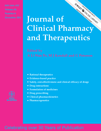Diabetes management in an Australian primary care population
Summary
What is known and objective: Worldwide studies have shown that significant proportions of patients with type 2 diabetes (T2DM) do not meet targets for glycaemic control, blood pressure (BP) and lipids, putting them at higher risk of developing complications. However, little is known about medicines management in Australian primary care populations with T2DM. The aim of this study was to (i) describe the management of a large group of patients in primary care, (ii) identify areas for improvement in management and (iii) determine any relationship between adherence and glycaemic, BP and lipid control.
Methods: This was a retrospective, epidemiological study of primary care patients with T2DM diabetes, with HbA1c of >7%, recruited in 90 Australian community pharmacies. Data collected included demographic details, diabetes history, current medication regimen, height, weight, BP, physical activity and smoking status.
Results and discussion: Of the 430 patients, 98% used antidiabetics, 80% antihypertensives, 73% lipid lowering drugs and 38% aspirin. BP and all lipid targets were met by only 21% and 14% of the treated patients and 21% and 12% of the untreated patients respectively. Medication adherence was related to better glycaemic control (P = 0·04).
What is new and conclusions: An evidence-base prescribing practice gap was seen in this Australian primary care population of T2DM patients. Patients were undertreated with antihypertensive and lipid lowering medication, and several subgroups with co-morbidities were not receiving the recommended pharmacotherapy. Interventions are required to redress the current evidence-base prescribing practice gap in disease management in primary care.




